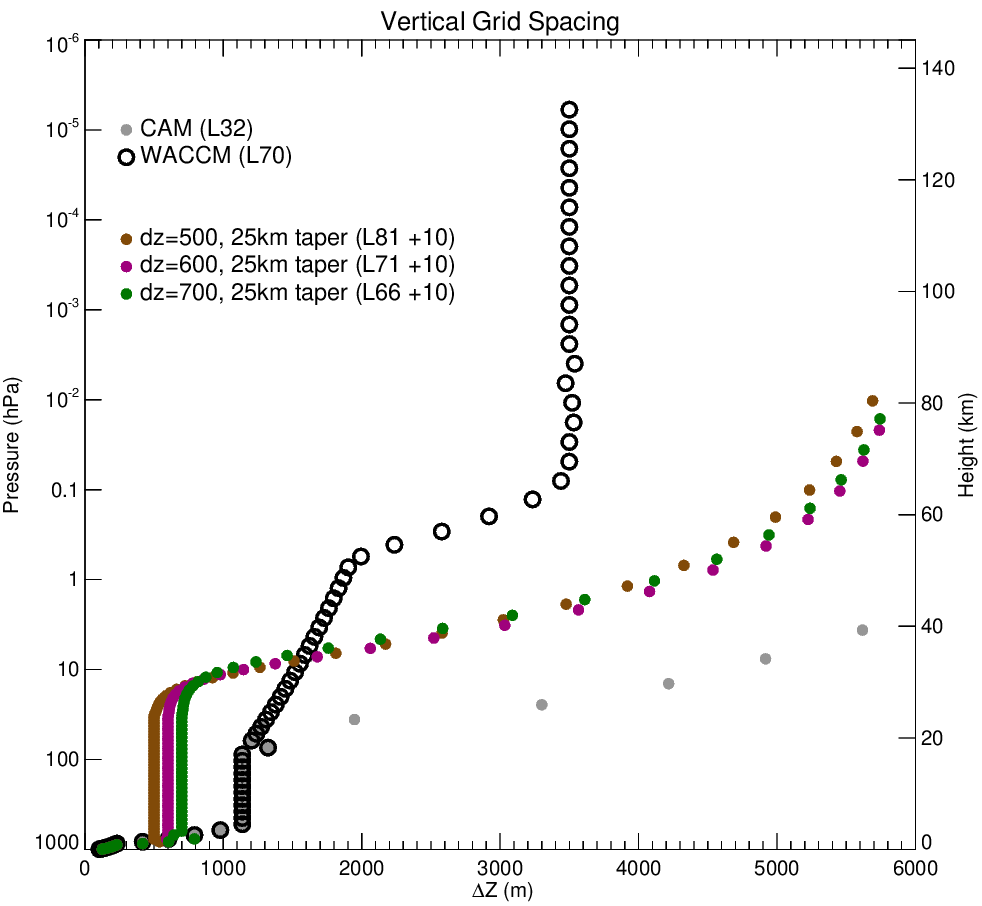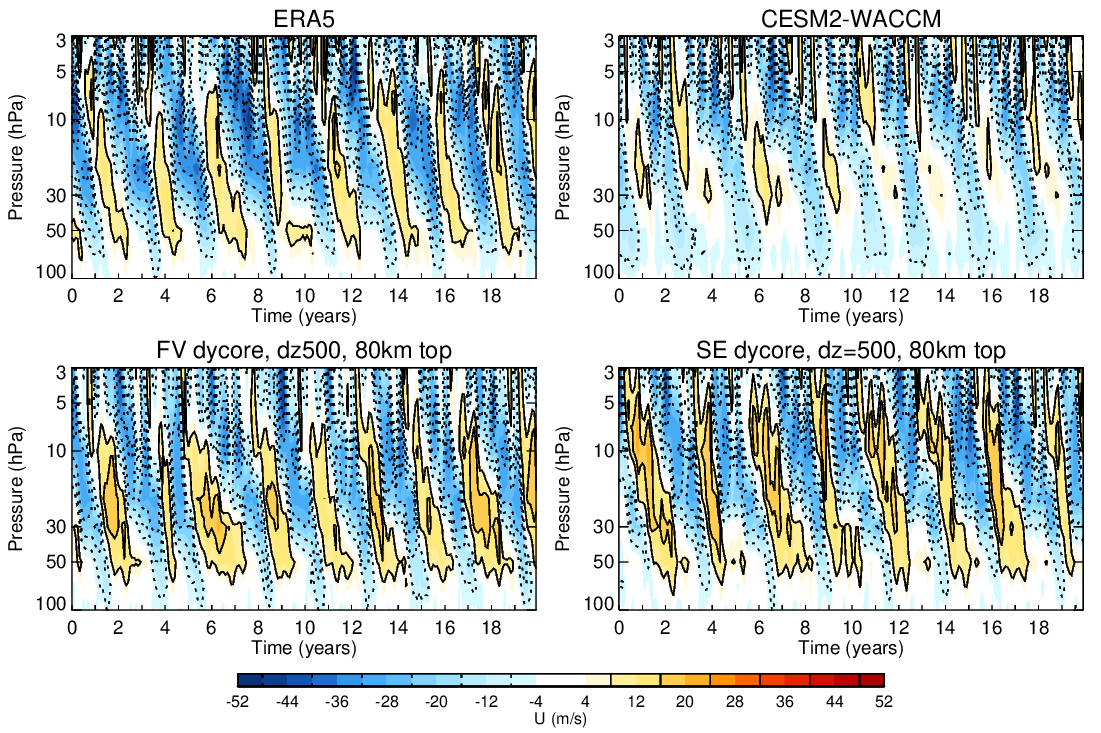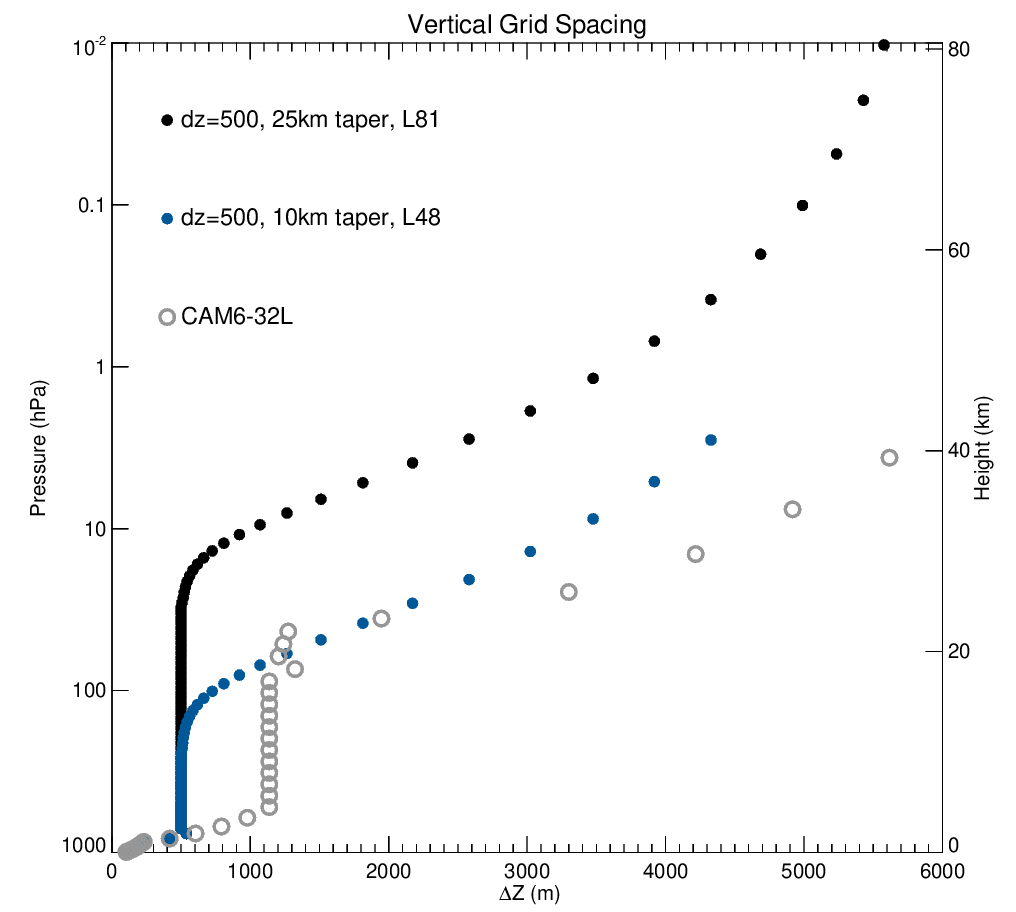Vertical Grids Phase 1 Results
An extensive suite of tests were performed with various vertical grid spacing in the free troposphere and lower stratosphere (referred to as dz, hereafter) to examine the benefits gained by going to higher vertical resolution. Figure 1 provides a comparison of the vertical resolution in our current CAM and WACCM configurations (gray and black) with three potential grids for the new 80km “workhorse” configuration. Each of these new grids has a constant vertical resolution in the free troposphere and lower stratosphere and they range between a resolution in this region of dz=500 (brown) and dz=700 (green). The resolution is then degraded following a hyperbolic tangent profile to a model top at 80km. The overall resolution of each of these configurations is quoted in the legend with the “+10” referring to the fact that we expect to add an additional 10 levels into the boundary layer once Phase 2 is completed.
* Click image for larger version
The results of Phase 1 indicated that we could successfully place the model top at 80km without substantial degradation in the climate below around 1hPa relative to WACCM. In addition, the enhanced free tropospheric and stratospheric resolution compared to current WACCM and CAM allows for a much improved simulation of the QBO (Figure 2). The QBO is one of the primary features that is sensitive to the free tropospheric and stratospheric resolution (dz). Tests with the finite volume dynamical core indicate that the optimum resolution for representing the amplitude of the QBO and the resolved wave driving in the lower stratosphere is dz=500. However, tests are currently underway to determine whether this holds true within the spectral-element dynamical core.
* Click image for larger version
A proposed grid for the low-top (40km) model with dz=500m is shown in Figure 3. Testing of the climate of this low-top configuration is currently under-way and it will soon be used to start testing new vertical grid configurations of the boundary layer in Phase 2.
* Click image for larger version


